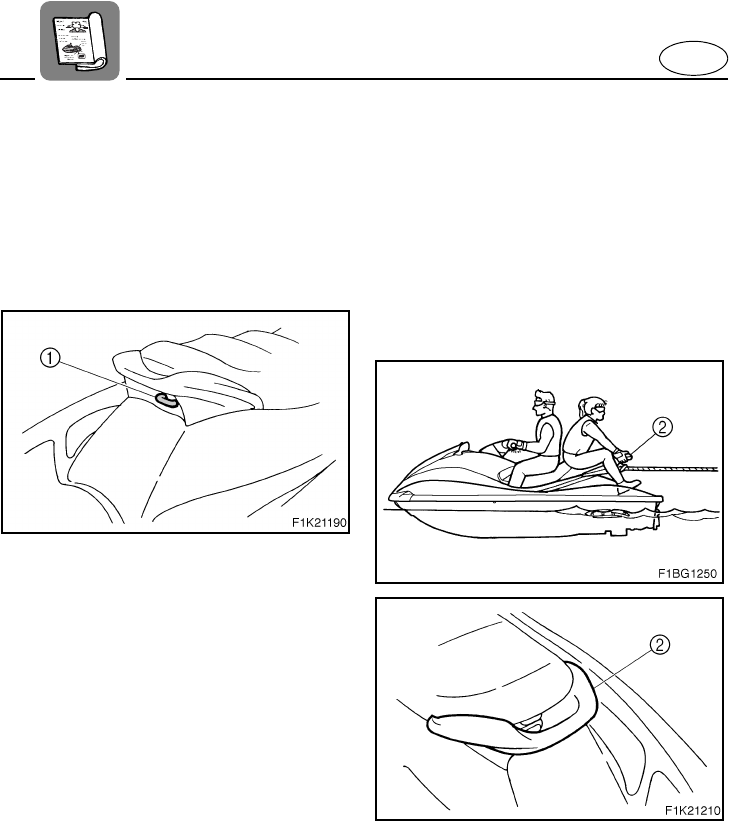
1-17
E
EJU17820
Water-skiing
You can use the watercraft for water-ski-
ing if it has the seating capacity to carry the
operator, a rearward-facing spotter, and the
water-skier when he or she is not skiing.
The watercraft must also have a cleat 1
designed to pull a ski towrope; do not attach
the towrope to any other location.
It is the watercraft operator’s responsibility
to be alert to the safety of the water-skier
and others. Know and follow all state and
local water-skiing regulations in effect for the
waters in which you will be operating.
The operator should be comfortable car-
rying passengers before attempting to pull a
skier.
The following are some important consid-
erations for minimizing risks while water-ski-
ing.
●
The skier should wear an approved PFD,
preferably a brightly colored one so boat
operators can see the skier.
●
The skier should wear protective clothing.
Severe internal injuries can occur if water
is forced into body cavities as a result of
falling into the water. Normal swimwear
does not adequately protect against
forceful water entry into rectum or vagina.
The skier should wear a wetsuit bottom or
clothing that provides equivalent protec-
tion.
●
A second person should be on board as a
spotter to watch the skier; in most states it
is required by law. Let the skier direct the
operator’s control of speed and direction
with hand signals.
The spotter should sit securely on the
passenger seat and hold onto the hand-
grip 2 with feet firmly on the floor of the
footwell for proper balance while facing to
the rear to watch the skier’s hand signals
and his or her condition.
UF1K11.book Page 17 Thursday, June 2, 2005 8:45 AM


















